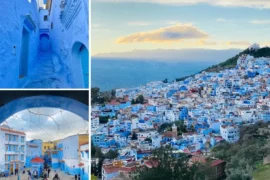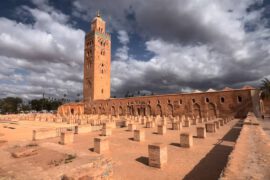Forget the flickering black and white of a Hollywood soundstage. While the classic film evokes an era of wartime romance and intrigue, the real Casablanca is a dynamic, modern metropolis pulsing with energy, a vibrant cultural melting pot where tradition meets innovation. As Morocco’s largest city and its economic engine, Casa, as it’s known to locals, serves as a crucial gateway for travelers arriving by air or sea. For those stepping ashore from a cruise ship or beginning a longer Moroccan adventure, Casablanca offers a fascinating glimpse into the country’s forward-facing spirit, blending its rich history with a distinctly European-flavored urban sophistication.
A City Forged by History
Casablanca’s story stretches back centuries, originating as the ancient port of Anfa . Its modern form, however, was largely shaped by the French colonial influence from 1912 to 1956. French architect Henri Prost was hired to redesign the city as the economic center of the new protectorate, laying out wide boulevards and incorporating a unique style known as Mauresque architecture, which melds French-colonial design with traditional Moroccan elements. This period saw Casablanca evolve rapidly, transforming into the thoroughly modern city it is today, undergoing continuous development while still revealing rich strata of history. It’s a city that looks to the future while paying homage to its roots.
Unveiling Casablanca’s Gems
Beyond the cinematic myth, Casablanca boasts several compelling sights that showcase its unique character:
Hassan II Mosque
Dominating the city’s skyline, this massive mosque is a breathtaking example of Moroccan artistry. Set dramatically with its foundations partly on land and partly in the sea, its soaring minaret is over 650 feet high. The interior, open to non-Muslims via guided tours outside of prayer times, is a showcase of exquisite craftsmanship, featuring hand-carved stone and wood, intricate marble, gilded cedar ceilings, and spectacular zellij (geometric mosaic tilework). At one point inside, you can even see the water through a glass floor . The main hall is vast, holding 25,000 people, and has a retractable roof. A small museum displays the craftwork involved in its construction. Visitors should dress modestly for tours.
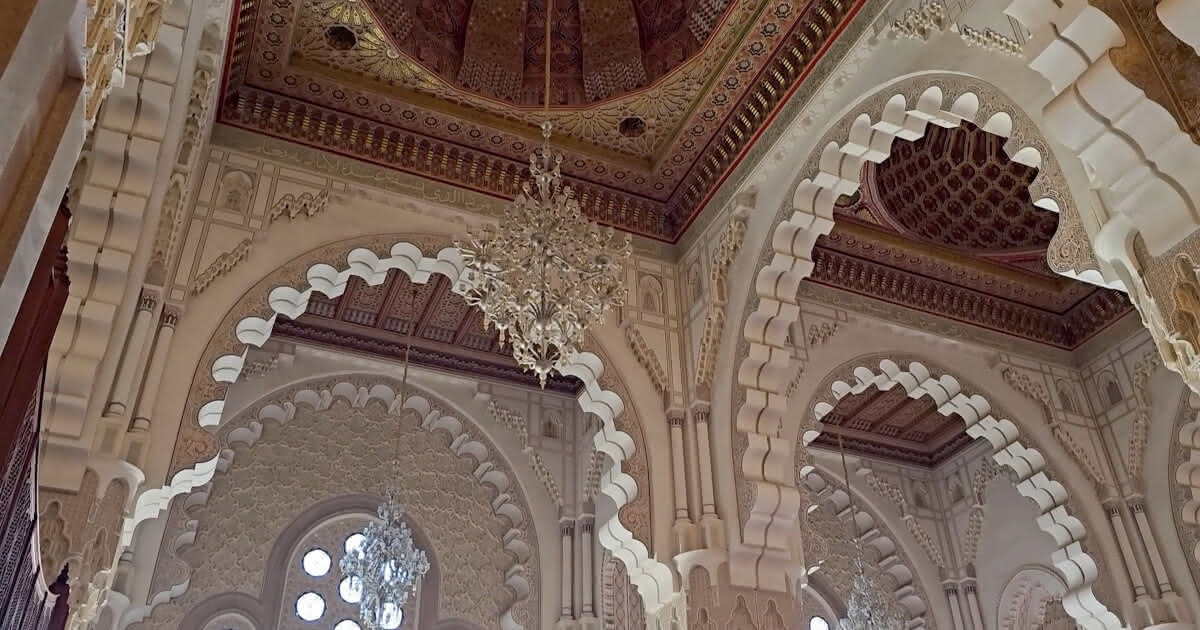
The Corniche
The landscaped walkway along the sea, known as La Corniche, is a favorite spot for families and offers a feel for Casablanca’s Atlantic setting. Here, a seafront line of cafes and restaurants invites visitors to relish the sun and breeze. On weekends, the area is bustling with people, and in the evenings, nightclubs and bars come alive. You can walk along the extended Corniche from the lighthouse at El Hank to the Hassan II Mosque.
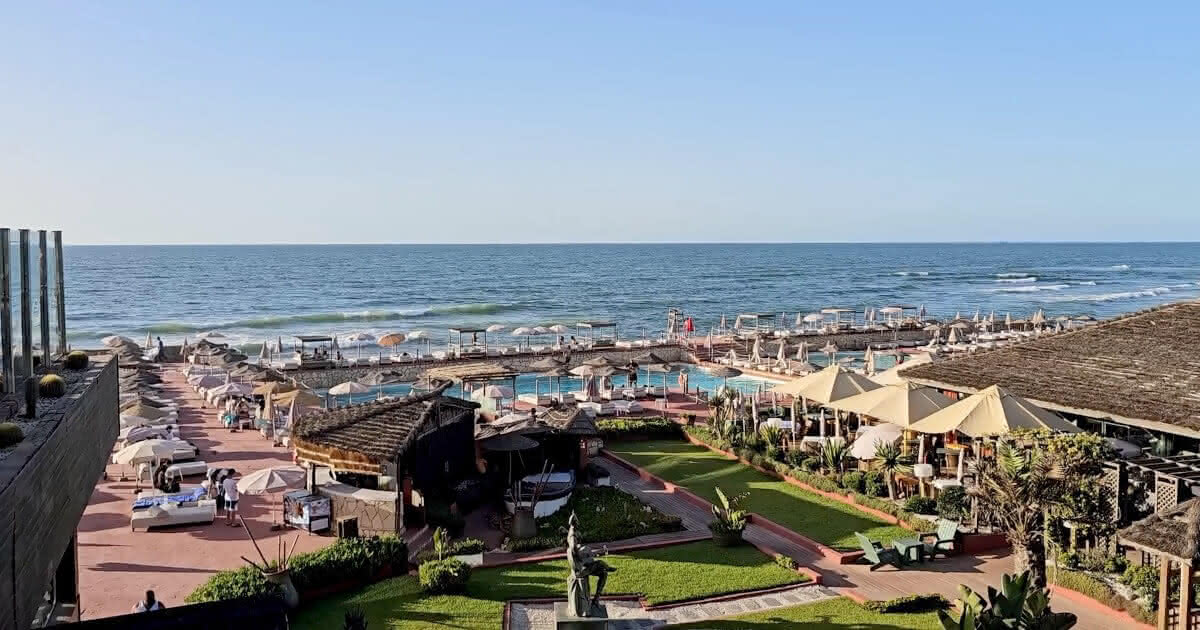
Old Medina
While not possessing the medieval charm of other Moroccan cities, Casablanca’s compact, 19th-century Old Medina is still worth exploring. Though treasures are unlikely to be found in its shops selling hardware, clothing, and shoes, its crooked lanes, occasional tree-shaded squares, and local cafes offer a pleasant atmosphere and provide a popular route between downtown and the Hassan II Mosque. Travelers should exercise caution after dark when walking here.
Habous Quarter (New Medina)
Built by the French in the 1930s to offer a “sanitized” version of a traditional medina, the Quartier des Habous is a curiously attractive blend of French colonial architecture with Moroccan details Its shops, capped by arches, surround a pretty square. This is considered the best place in Casablanca to buy traditional Moroccan handicrafts. Shops here sell items like babouches (leather slippers), djellabas (long, hooded outer garments), soaps, spices, and ceramics. Key buildings include the Pasha’s Mahkama (court), which resembles a castle and is now used for district government administration, and the Mohammed V and Moulay Youssef Mosques, noted examples of traditional Maghrebi architecture.
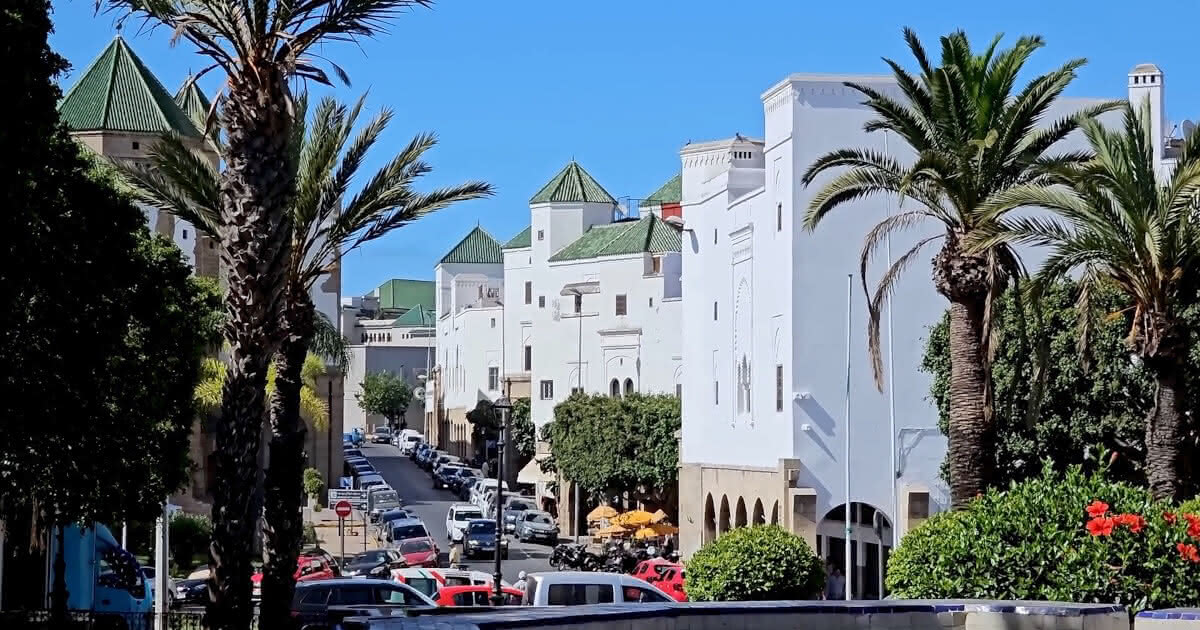
Villa Carl Ficke: Casablanca’s Memory Museum
This early-20th-century villa—once the home of German merchant Carl Ficke—has been meticulously restored as the city’s Museum of Memory, featuring rotating exhibitions on Casa’s multicultural past and landscaped gardens that form an open-air cultural oasis
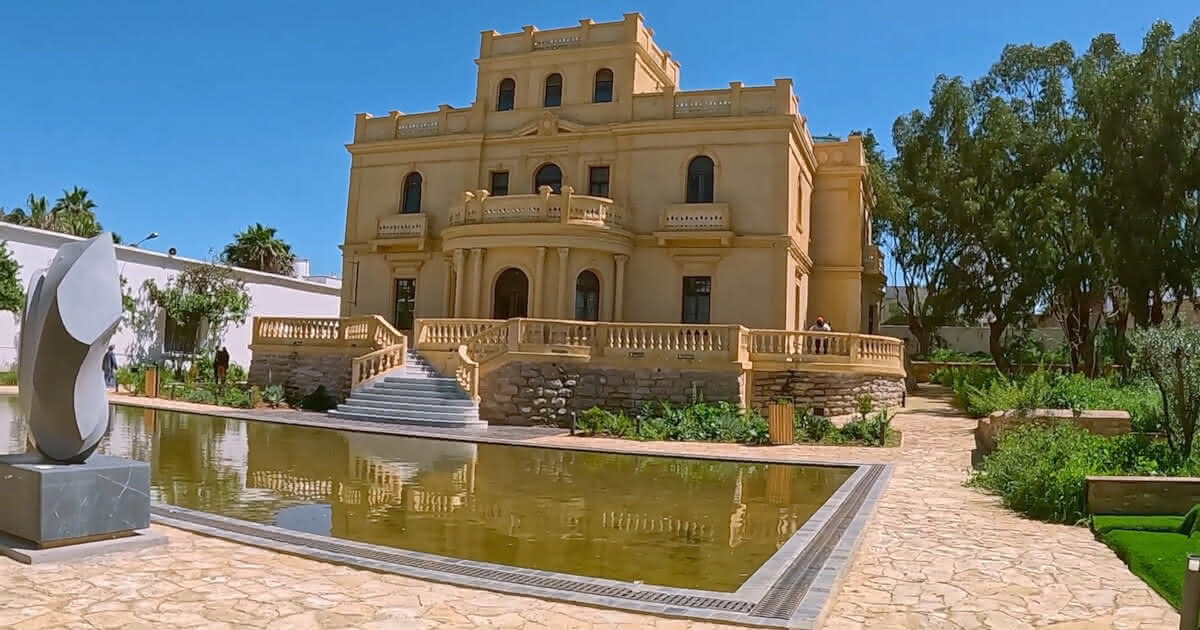
Sacred Heart Cathedral
Located downtown, this striking structure is being reinvented as a cultural center. Its architecture fits within the area’s heritage of Mauresque, Art Deco, and Art Nouveau styles from the French Protectorate era.
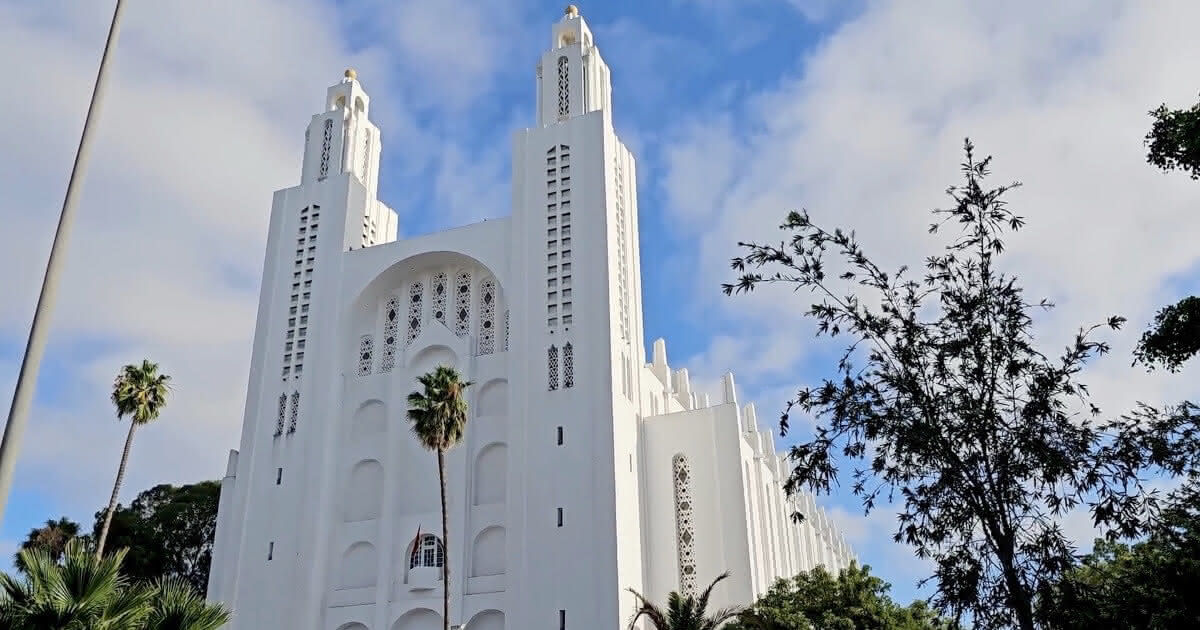
Royal Palace
Situated immediately north of the Habous Quarter, the Royal Palace cannot be entered, but its outer sandstone walls are noted as pleasing and blend well with the surrounding streets.
A Taste of Casablanca
Casablanca’s culinary scene is diverse, offering a mix of traditional Moroccan flavors and international cuisine. The northern Atlantic coast is particularly known for its seafood, with menus featuring delights like prawns, fried fish, squid, and shellfish.
Local Dishes
Don’t miss trying classic Moroccan dishes like aromatic tagines and fresh seafood, especially along the coast. Moroccan salads like zaalouk (eggplant puree) and felfla matisha (grilled pepper and fresh tomato) are also delicious options, particularly for vegetarians.
Dining Options
The city caters to various tastes and budgets. Inexpensive snack bars and cafes are widely available. For street food, the area near the Marché Central is excellent for roast chicken, brochettes, and sandwiches. Upscale options include restaurants along the Corniche offering stunning ocean views and Mediterranean cuisine. Casablanca and Rabat are noted as the best places on this stretch of coast for traditional Moroccan cuisine in a restaurant setting, as locals often eat it at home.
Immersing in Culture
Casablanca offers a growing arts and culture scene.
Art Galleries and Museums
Explore art galleries, particularly in areas known for modern boutiques. The Abderrahman Slaoui Foundation Museum showcases a collection of Moroccan decorative arts, including jewelry, furniture, and posters, in a lovely house. The Villa des Arts also hosts exhibitions. The Museum of Moroccan Judaism, set in a villa, offers a permanent exhibition of traditional ceremonial objects. The American Center for the Arts is a cultural center hosting exhibitions, dance, theater, and other pursuits.
Music and Entertainment
Casablanca has a vibrant nightlife scene, especially along Boulevard de la Corniche. Enjoy drinks, dancing with DJs, and live music. The city hosts urban music festivals like Jazzablanca in June and L’Boulevard in September, featuring local and international artists. Vertigo offers a mix of DJs, live music, and theater downtown. The Grand Théâtre de Casablanca, Africa’s largest theater, is a striking architectural landmark and multidisciplinary art space that will host performances.
Traditional Hammams and Spas:
Experience an important part of Moroccan culture by visiting a hammam, a cross between a sauna and a Turkish bath. Hammam Ziani is a friendly, authentic option offering traditional services. Hammams are also available at the Hassan II Mosque. For a more modern experience, some hotels offer luxurious spa facilities.
Shopping Adventures
Whether you seek traditional crafts or modern design, Casablanca offers diverse shopping opportunities.
Souks
The Habous Quarter is the top spot in Casablanca for purchasing traditional Moroccan handicrafts like leather slippers, clothing, soaps, spices, and ceramics. The Maarif market is known among locals for fruits, vegetables, fish, spices, olives, flowers, and argan products.
Boutiques
The Maarif district, south of Boulevard Zerktouni, is Casablanca’s main shopping area, featuring European retailers and specialty shops. The Twin Center shopping mall is also located here. Modern boutiques and art galleries can be found in areas like Gueliz (in Marrakesh, a similar modern district concept) and Gauthier.
Exploring Beyond the City: Day Trips
Casablanca’s location on the Atlantic coast makes it a convenient base for exploring nearby destinations.
Rabat
Just a short trip north, Rabat is Morocco’s political capital, offering a more sedate urban experience with significant historical interest and splendid architecture. Key sights include the Hassan Tower, Mohammed V Mausoleum, Chellah Gardens and Necropolis, and the Oudayas Kasbah overlooking the Atlantic. Rabat boasts monuments from successive Arab dynasties and a less touristy medina than other major cities.
El Jadida
Located southwest of Casablanca, this coastal town features a fascinating old town built by the Portuguese. Its main draw is the UNESCO-listed 16th-century Cité Portugaise, with its impressive bastions and subterranean cistern. It can be explored in a few hours.
Azemmour
Also southwest of Casablanca, Azemmour is an artistic town on the Oum Errabi River and the Atlantic Ocean. It has a medina with a Portuguese flavor and has inspired artists.
Venturing Further: Multi-Day Tours
Casablanca serves as a frequent starting point for longer explorations of Morocco.
Desert Expeditions
From Casablanca, you can embark on journeys towards the Sahara Desert, a vast and breathtaking landscape. These expeditions often involve traveling to gateway towns and experiencing adventures like camel treks and overnight stays under the stars.
Imperial Cities Tour
Casablanca is often the first stop on classic tours of Morocco’s Imperial Cities. These tours typically visit Rabat, the political capital; Fez, known for its ancient medina; Meknes, another historic city with impressive architecture; and Marrakesh, famous for its vibrant markets and historical sites. Such tours allow you to delve deep into Morocco’s fascinating history and culture.
Cultural Immersion
Longer tours from Casablanca can incorporate deeper cultural experiences. This might include cooking classes to learn how to prepare traditional Moroccan dishes, visiting artisan workshops to see crafts being made, or timing your visit to coincide with local festivals celebrating music and art. Stylia Tours offers tailored tours from major Moroccan cities.
Practical Considerations for Your Visit
Best Time to Visit
For pleasant weather conducive to exploring cities and souks without excessive heat, spring (March-May) and autumn (September-November) are considered ideal.
Cruise Port Access
Casablanca has a busy seaport and is a major entry point. The port area (Casa Port) is located downtown, making many attractions accessible for day visitors arriving by cruise ship. Transport options available from the port area for getting around include the city’s efficient tramway system which connects to the old medina and downtown, and taxis. Private transport and guided tours are also available from Casablanca.
Casablanca Awaits
Beyond the silver screen’s romanticized vision, the real Casablanca stands as a compelling destination. It’s a city that embraces its role as Morocco’s modern face, offering a rich blend of history, striking architecture, delicious cuisine, and vibrant cultural experiences. Whether you have just a few hours from a cruise ship or several days to explore, Casablanca provides a captivating introduction to the energy and ambition of contemporary Morocco.
Discover Other Popular Travel Destinations
22 Incredible Destinations | Agadir | Marrakesh | Fez | Meknes | Rabat | Casablanca | Tangier | Chefchaouen | Asilah | Essaouira | Taroudant | Ouarzazate | Ait Benhaddou | Atlas Mountains | Boumalne Dades | Todra Gorge | Kalaat M’Gouna | Amtoudi | Agafay | Moroccan Desert | Merzouga | Zagora | Draa Valley

